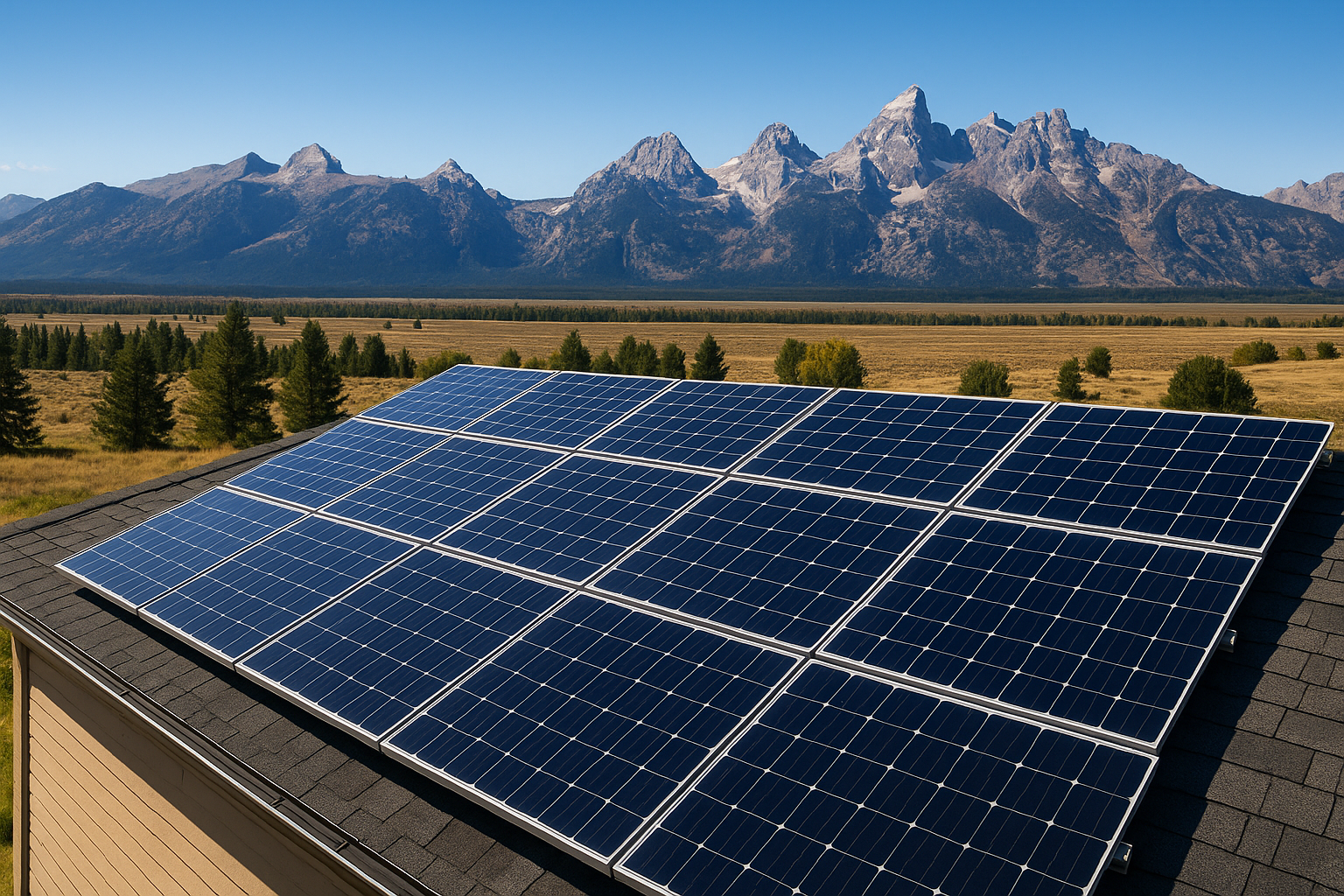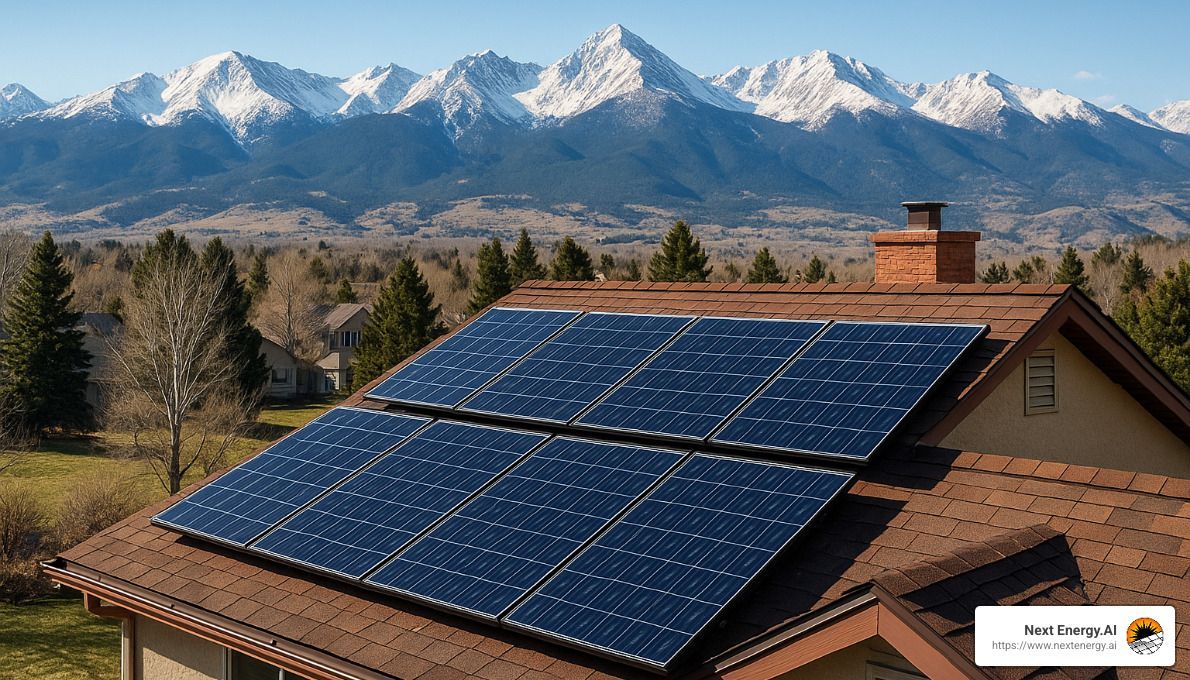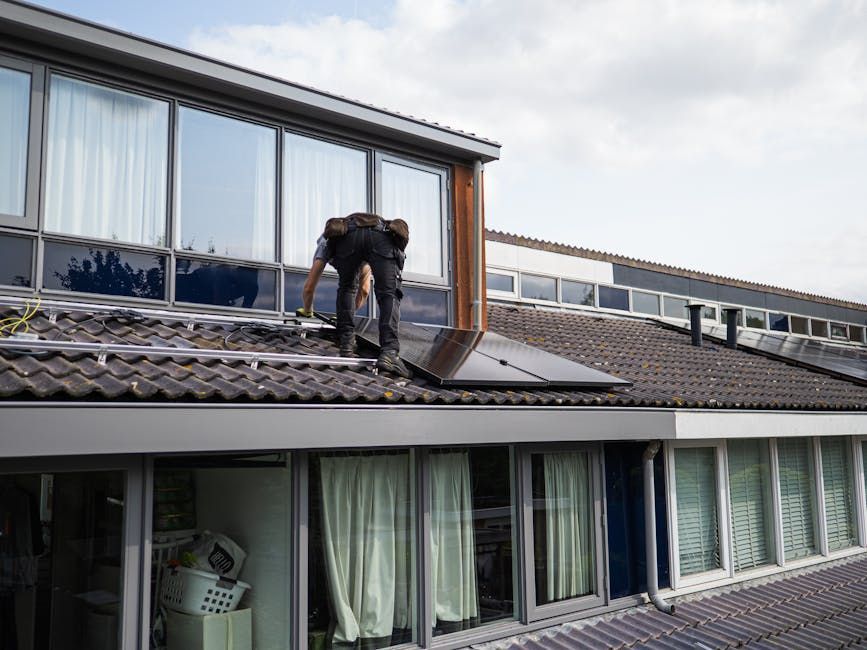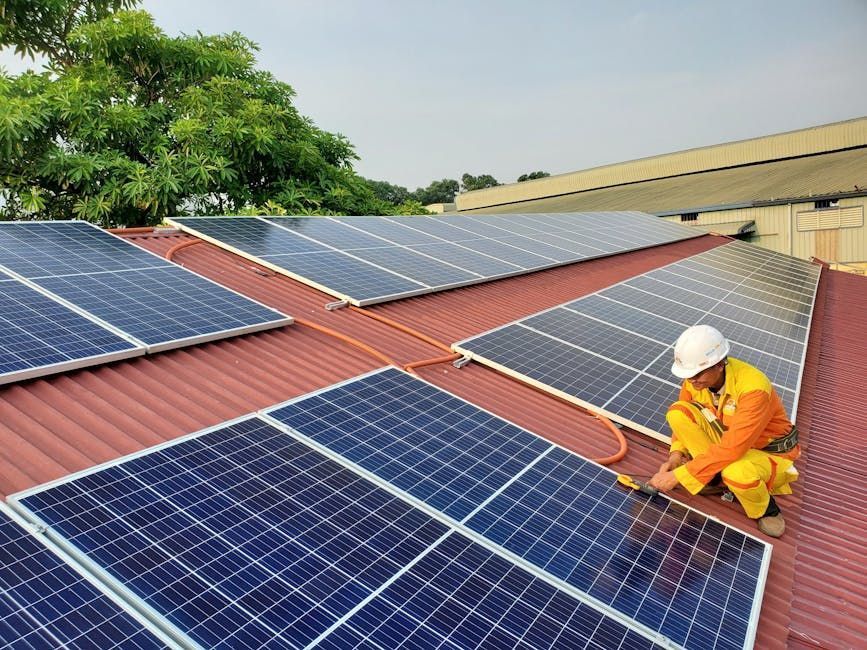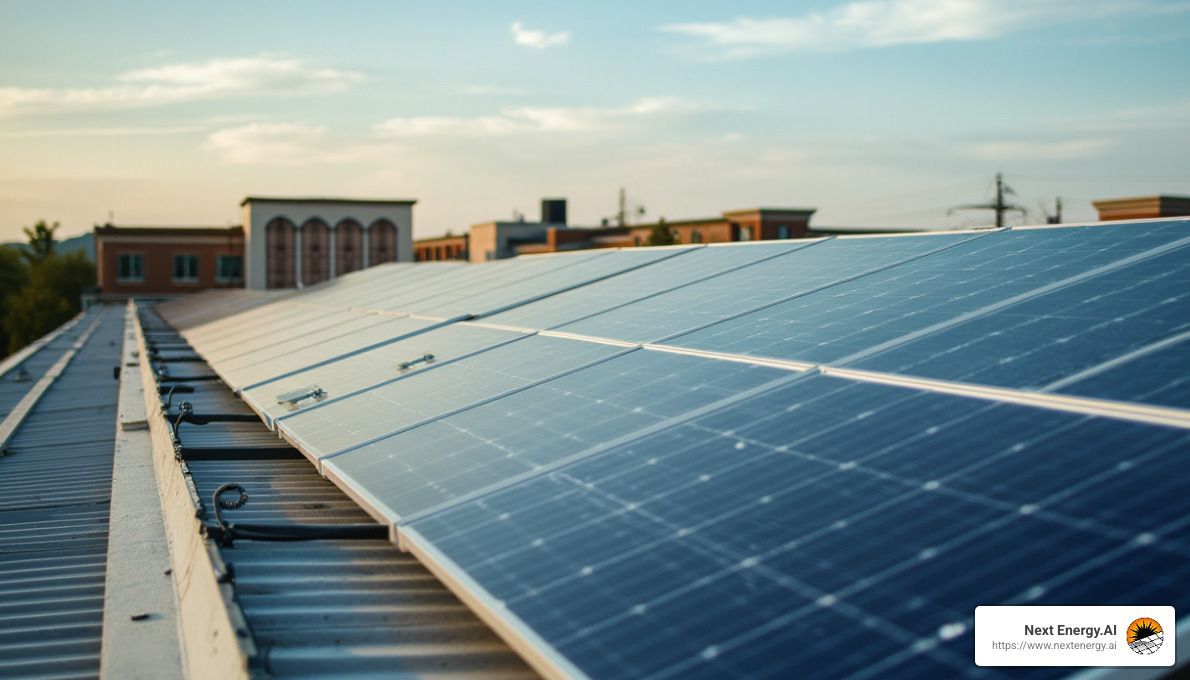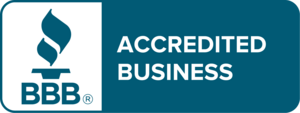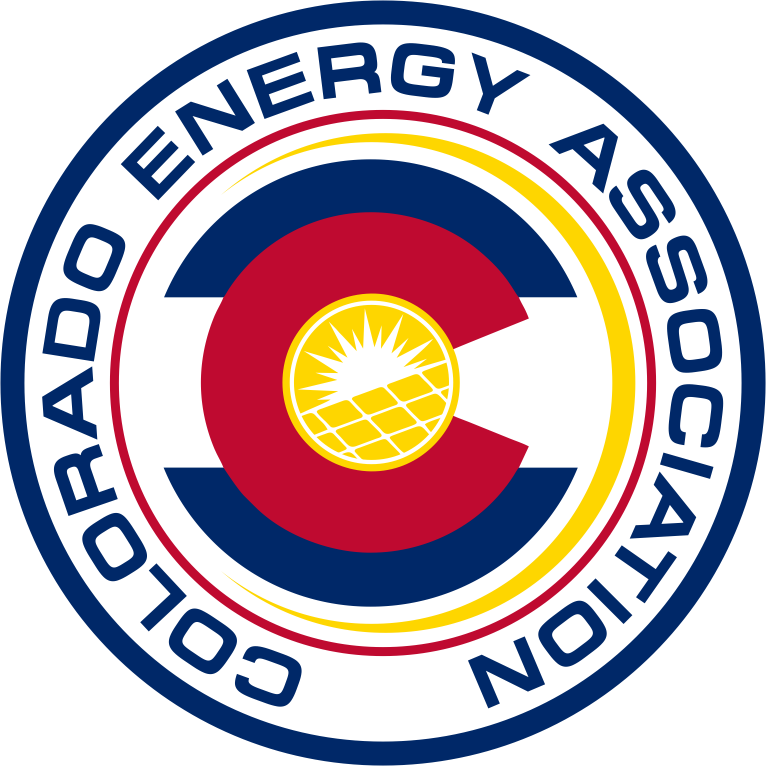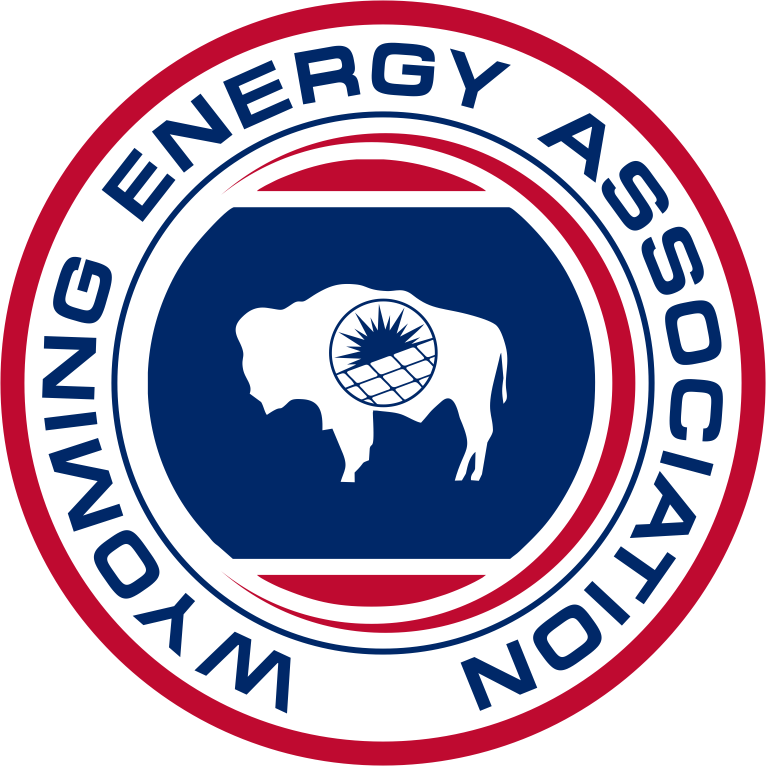The Next Frontier: Exploring Advanced Renewable Energy Solutions
Advanced renewable energy solutions are paving the way for a more sustainable future. These solutions include innovative technologies and methods that harness clean energy sources like solar and wind, making them more accessible and efficient than ever before. Here's a quick glance into what these advanced solutions entail:
- Improved solar panels and wind turbines for increased efficiency.
- Integration of artificial intelligence to optimize energy usage.
- Advanced battery storage systems for better energy management.
- Smart grids to support flexible and reliable renewable energy supply.
Renewable energy is at the heart of sustainability and the ongoing energy transition. As more people seek to lower their energy costs and environmental impact, the demand for innovative energy solutions continues to grow.
I'm Spencer Gordon, CEO of Next Energy.AI, with deep expertise in advanced renewable energy solutions. With a decade-long career in renewable energy and a commitment to bringing clean energy to Northern Colorado, I aim to make advanced renewable energy solutions both accessible and beneficial.
Let’s dive deeper into understanding these groundbreaking solutions and how they are shaping our energy future.
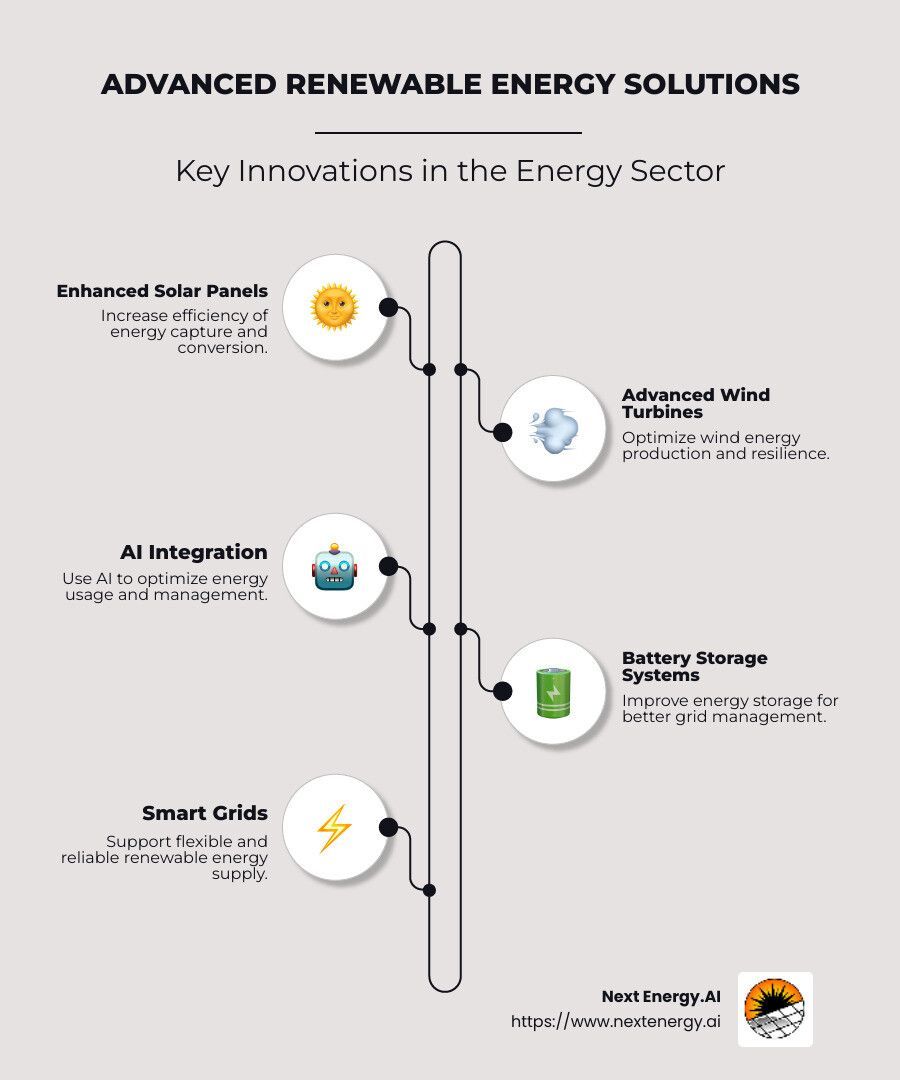
Understanding Advanced Renewable Energy Solutions
Advanced renewable energy solutions are changing how we harness and use clean energy. Let's break down some of the key components: solar energy, wind energy, and grid integration.
Solar Energy
Solar energy is a leading player in the renewable energy sector. Improved solar panel technology is making solar power more efficient and affordable. Panels now capture more sunlight and convert it into electricity more effectively than ever before. This means more energy for less cost and effort.

In regions like Northern Colorado and Southern Wyoming, where Next Energy.AI operates, solar energy is increasingly popular for both residential and commercial use. The sunny climate and open spaces make it an ideal location for solar installations. Our advanced solar solutions, such as high-efficiency panels and optimized installations, ensure maximum energy output.
Wind Energy
Wind energy harnesses the natural power of wind through turbines. These turbines convert kinetic energy from the wind into electricity. Advanced turbine designs are now more efficient and can generate power even at lower wind speeds.
Wind energy is a significant part of the renewable energy mix, especially in areas with consistent wind patterns. It complements solar energy by providing power when the sun isn't shining.
Grid Integration
Grid integration is crucial for the widespread adoption of renewable energy. It involves connecting renewable energy sources to the existing power grid in a way that ensures stability and reliability. Smart grids play a vital role here. They use advanced technology to manage energy flow, balance supply and demand, and reduce outages.

Incorporating renewable energy into the grid requires sophisticated management systems. These systems ensure that energy from sources like solar and wind is efficiently distributed and stored. As regions like the United Kingdom have shown, using smart devices and monitoring systems can greatly improve grid performance and facilitate the integration of renewables.
By understanding these elements, we can appreciate how advanced renewable energy solutions are paving the way for a cleaner, more sustainable energy future.
Next, let's explore how AI is enhancing these solutions, making energy management smarter and more efficient.
Integrating AI in Renewable Energy
Artificial Intelligence (AI) is revolutionizing the renewable energy sector by making solar power smarter and more efficient. At Next Energy.AI, we integrate AI to optimize solar energy systems, improve energy management, and provide custom solutions for our clients.
AI-Improved Solar
AI technology in solar systems works by analyzing and learning from energy consumption patterns. This adaptive approach ensures maximum efficiency by adjusting to weather conditions, seasonal changes, and unique energy demands. For example, AI can predict when solar panels will produce the most energy and adjust usage accordingly.
Our AI-improved solar panels use algorithms similar to those in advanced technologies like ChatGPT. These algorithms fine-tune energy production and consumption, ensuring that every ray of sunlight is used effectively. This means more savings and a smaller carbon footprint for you.
Energy Management
Energy management is about using energy resources wisely. With AI, we can monitor and control energy use in real time. This means that energy is distributed where and when it's needed most, reducing waste and improving efficiency.
Smart home integration is a key feature of our AI solutions. Our systems work seamlessly with home automation platforms like Google Home and Amazon Alexa. This integration allows you to manage your energy use with simple voice commands, creating a cohesive, energy-efficient home environment.
Optimized Energy Usage
AI doesn't just manage energy; it optimizes it. By learning from your energy habits, AI can suggest changes to reduce consumption and costs. For instance, it can recommend the best times to run energy-intensive appliances or switch to battery storage when solar power is low.
In places like Laramie, WY, where Next Energy.AI operates, AI-driven systems offer significant benefits. They provide substantial energy cost savings, reduce carbon emissions, and give homeowners better control over their energy consumption.
By leveraging AI, Next Energy.AI is at the forefront of creating smarter, more efficient renewable energy solutions. This technology not only improves solar power but also paves the way for a more sustainable and energy-conscious future.
Next, we'll dig into the key technologies driving renewable energy forward, including battery storage and advanced grid management.
Key Technologies in Renewable Energy
In the quest for cleaner energy, several advanced renewable energy solutions are paving the way. Let's explore the key technologies that are changing the landscape: battery storage, grid management, and advanced transformer technologies.
Battery Storage
Battery storage systems are crucial for using renewable energy effectively. They store excess energy generated by solar panels or wind turbines for use when production is low, like during cloudy days or at night.
- Lithium-Ion Batteries: These are the most common type due to their high energy density and long cycle life. However, lithium is scarce, driving interest in alternative technologies.
- Sodium-Ion Batteries: Emerging as a promising alternative, sodium-ion batteries offer a more sustainable and potentially cheaper option. Although they have a lower cycle life and energy density compared to lithium-ion, they are safer and less prone to thermal runaway.
- Flow Batteries: Known for their long life and scalability, flow batteries store energy in liquid form, making them suitable for large-scale applications.
Grid Management
Effective grid management ensures that the energy produced by renewable sources is efficiently distributed and used.
- Advanced Grid Technologies: These include smart grids that use sensors and communication networks to monitor and manage energy flow in real-time. This helps balance supply and demand, reducing the need for costly peaking power plants.
- Flexibility Services: These services allow grid operators to adjust energy consumption and production in real-time. By doing so, they can provide a more stable power supply and minimize reliance on non-renewable energy sources.
Advanced Transformer Technologies
Transformers are essential for converting and distributing electricity across the grid.
- Smart Transformers: These are equipped with sensors and communication capabilities that allow for real-time monitoring and control. They help improve grid reliability and efficiency by adjusting voltage levels based on demand.
- Solid-State Transformers: Offering greater efficiency and flexibility, these transformers can handle higher power levels and provide better voltage regulation. They are ideal for integrating renewable energy sources into the grid.
By embracing these technologies, we can improve the efficiency and reliability of renewable energy systems. These innovations not only make renewable energy more accessible but also ensure a sustainable and resilient power grid for the future.
Next, we'll discuss the challenges and barriers to adopting renewable energy and how we can overcome them.
Overcoming Barriers to Renewable Energy Adoption
Transitioning to renewable energy is no walk in the park. Despite the promise of advanced renewable energy solutions, the path forward is fraught with challenges. Let's explore the key obstacles and explore strategies to overcome them: scaling renewables, market volatility, and energy strategies.
Scaling Renewables
The need to scale renewable energy is urgent. According to the International Renewable Energy Agency, renewables should make up 77% of the world's energy supply by 2050. To hit this target, renewable capacity must triple by 2030. That's an annual addition of 1,200 gigawatts! However, industry executives report substantial delays, often due to regulatory problems and infrastructure bottlenecks.
Strategies to Scale:
- Streamline Permitting Processes: Speed up project approvals by simplifying regulations.
- Improve Infrastructure: Invest in grid upgrades to handle increased renewable capacity.
- Foster Collaboration: Encourage partnerships between governments, private sectors, and communities to share resources and knowledge.
Market Volatility
The renewable energy market is not immune to fluctuations. Recent global events, like the invasion of Ukraine, have led to energy price spikes. This volatility poses a risk to renewables, as high costs can deter investment and slow adoption.
Strategies to Mitigate Volatility:
- Diversify Energy Sources: Reduce reliance on a single energy type by integrating multiple renewable sources like solar, wind, and hydro.
- Implement Hedging Strategies: Use financial instruments to lock in energy prices and protect against market swings.
- Promote Energy Storage: Invest in battery storage technologies to provide a buffer against supply disruptions.
Energy Strategies
Industrials face a complex energy landscape. High electricity prices, sustainability goals, and supply chain issues all demand a robust energy strategy. Without a clear plan, businesses risk financial instability and production disruptions.
Key Energy Strategies:
- Optimize Energy Use: Implement energy efficiency measures to reduce consumption and costs.
- Secure Energy Supply: Develop on-site generation capabilities, such as combined heat and power (CHP) plants, to ensure a stable energy supply.
- Leverage AI for Energy Management: Use AI technology to analyze energy patterns and optimize usage.
By tackling these barriers head-on, we can pave the way for a more sustainable energy future. As we continue to innovate and adapt, the potential for renewable energy to transform our world remains immense.
Next, we'll address some common questions about advanced renewable energy solutions to further explain this exciting field.
Frequently Asked Questions about Advanced Renewable Energy Solutions
What are advanced renewable energy solutions?
Advanced renewable energy solutions involve using cutting-edge technologies to harness energy from natural sources like the sun, wind, and water. These solutions aim to make energy production cleaner and more efficient, reducing our carbon footprint. Solar systems, for instance, use photovoltaic panels to convert sunlight into electricity. Wind turbines capture wind energy to generate power. These technologies are constantly evolving to become more efficient and accessible.
How can AI improve solar energy solutions?
Artificial Intelligence (AI) plays a significant role in enhancing solar energy systems. By analyzing energy consumption patterns, AI can optimize how solar panels are used, ensuring they produce the most power possible. AI integration allows for real-time adjustments based on weather conditions and energy demand. This means more efficient energy production and less waste. With AI, solar systems can also predict maintenance needs, reducing downtime and extending the lifespan of the equipment.
What are the benefits of integrating renewable energy into grids?
Integrating renewable energy into the power grid offers numerous benefits. One of the key advantages is grid flexibility. Renewable sources like solar and wind can be unpredictable, but modern grids can balance supply and demand in real time. Energy storage solutions, like batteries, help store excess energy for later use, ensuring a stable power supply even when the sun isn't shining or the wind isn't blowing. This integration reduces reliance on fossil fuels, leading to a cleaner environment and more sustainable energy future.
By understanding these elements, we can better appreciate the potential of advanced renewable energy solutions in driving a more sustainable world.
Conclusion
At Next Energy.AI, we're passionate about leading the way toward a sustainable future. Our focus is on creating clean energy solutions that are both innovative and accessible. By integrating advanced AI technology with solar energy systems, we offer a unique approach that not only harnesses the power of the sun but also optimizes its use for maximum efficiency.
Our AI-improved solar solutions transform solar panels into intelligent energy management systems. This means that our clients can enjoy significant energy savings while also contributing to a greener planet. By optimizing energy usage and predicting maintenance needs, our systems ensure that solar panels operate at peak performance, reducing waste and extending their lifespan.
We believe that a sustainable future is only possible through collaboration and innovation. By working together with communities in Denver and beyond, we aim to make renewable energy the norm. Our commitment to quality, innovation, and customer satisfaction sets us apart as leaders in the solar industry.
Join us on this journey to a cleaner, more sustainable future. Find how our advanced renewable energy solutions can transform your energy usage and benefit the planet. Visit our Denver location page to learn more about our services and how we can help you make the switch to clean energy today.



